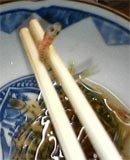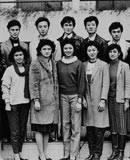不支持Flash
|
1993年Passage 3
When an invention is made, the inventor has three possible courses of action open to him: he
can give the invention to the world by publishing it, keep the idea secret, or patent it.
A granted patent is the result of a bargain struck between an inventor and the state, by which the inventor gets a limited period of monopoly (垄断) and publishes full details of his invention to the public after that period terminates. Only in the most exceptional circumstances is the lifespan of a patent extended to alter this normal process of events.
The longest extension ever granted was to Georges Valensi; his 1939 patent for color TV receiver circuitry was extended until 1971 because for most of the patent’ s normal life there was no colour TV to receive and thus no hope of reward for the invention.
Because a patent remains permanently public after it has terminated, the shelves of the library attached to the patent office contain details of literally millions of ideas that are free for anyone to use and, if older than half a century, sometimes even re-patent. Indeed, patent experts often advise anyone wishing to avoid the high cost of conducting a search through live patents that the one sure way of avoiding violation of any other inventor’ s right is to plagiarize a dead patent. Likewise , because publication of an idea in any other form permanently invalidates further patents on that idea, it is traditionally safe to take ideas from other areas of print. Much modern technological advance is based on these presumptions of legal security.
特别说明:由于各方面情况的不断调整与变化,新浪网所提供的所有考试信息仅供参考,敬请考生以权威部门公布的正式信息为准。





